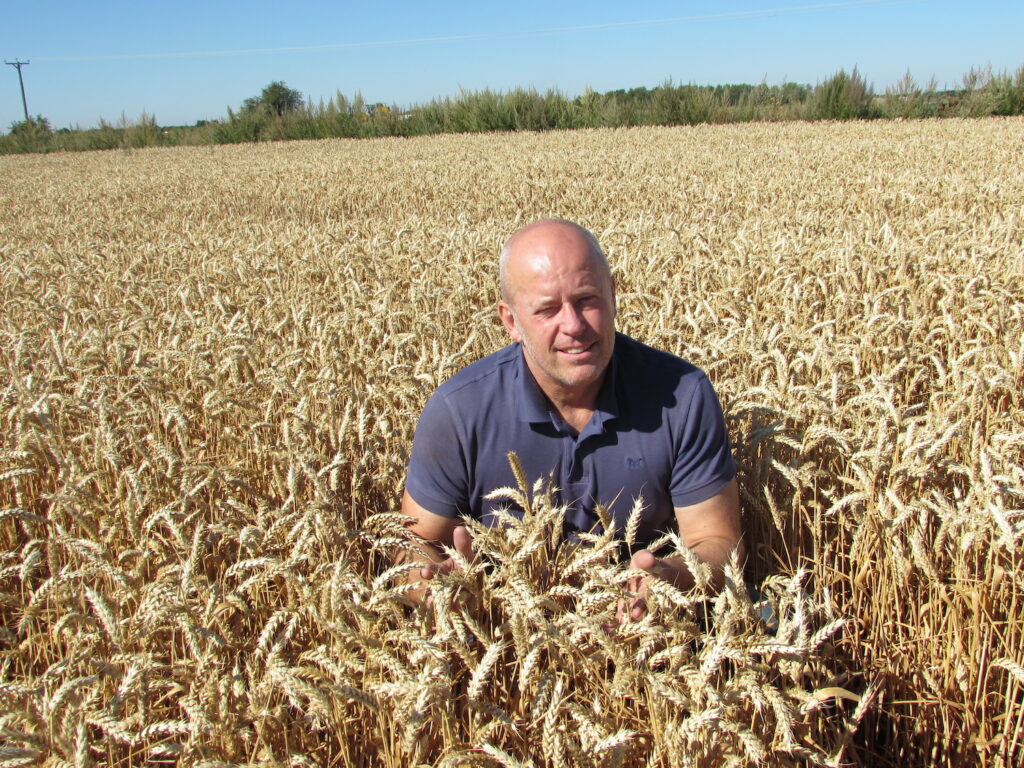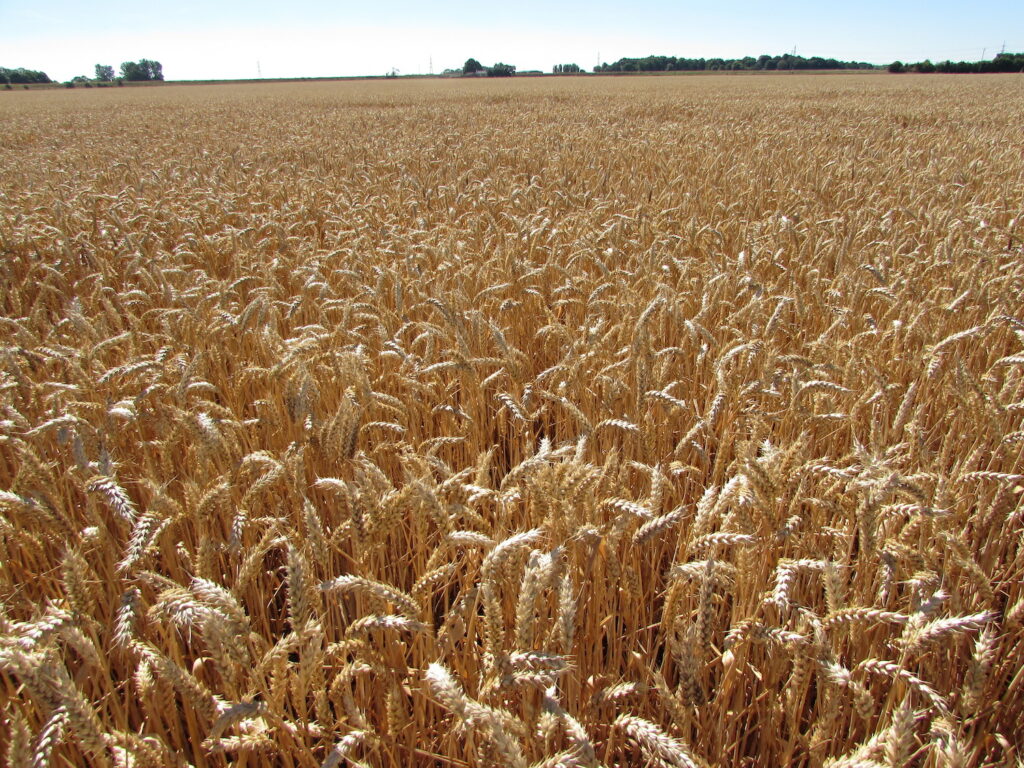New Group 2 wheat shows “definite milling quality”
9th September 2022
New Group 2 milling wheat Mayflower lived up to its promise with farmers reporting impressive yields and high protein levels following this year’s harvest.

Senior farm manager Paul Langford of Lincolnshire Field Products was delighted with the yield from his very late drilled crop of Mayflower.
Mayflower has proven to be one of the top-performing winter wheats this year, post-harvest grower reports say. The variety already showed great potential at the 2021 Recommended List trials, where it stood out with its excellent disease resistance and very high untreated yield of 90%.
Tom Reynolds of S. Salbstein Limited drilled 32ha of Mayflower on his 200ha farm near Folkestone in Kent last autumn. Despite a very wet October and tough establishment conditions, Mayflower delivered on quality.
“We achieved 11.9t/ha at 13% moisture from the 32ha cut on 5th August. Mayflower did considerably better than our crop of KWS Extase and, all in all, it was a solid performance with the variety showing definite milling quality from the grain samples we tested,” Mr Reynolds said.
According to his records, Mayflower produced a specific weight of 82kg/hl with impressive protein levels of 12.8% – well beyond the 11.3-11.5% millers expect to see in a Group 2 wheat. It also held up well during the yellow rust outbreak on the farm which had no effect on the final yield.
“Mayflower is a strong, resilient variety and we will be growing it again this autumn,” Mr Reynold concluded.

Positive post-harvest grower reports on Mayflower indicate that it’s a low-input high-output variety that will be of significant interest to millers given its high protein levels.
At the time of writing, Mayflower has the highest septoria resistance rating (8.4) among all milling wheat varieties and also boasts a score of 9 for yellow rust resistance. These qualities make Mayflower suitable for use in conjunction with a reduced fungicide programme.
Paul Langford, senior farm manager at Lincolnshire Field Products, was impressed with his Mayflower yield of over 8t/ha despite a very late drilling on 3rd February.
“There’s always an element of risk when you drill really late, but the crop had a good entry following a crop of cauliflowers and it established very well despite the cold February temperatures,” Mr Langford explained.
Even with Mayflower’s excellent disease package, Mr Langford opted for a robust fungicide program as it was his first time growing the variety on the farm. The crop also received 190kg/ha of liquid nitrogen, applied across two splits in late March and early May respectively for additional support.
Fast-forward to post-harvest, Tom Sanderson, agronomist at Lincolnshire Field Products, remarked that a reduced fungicide program using a triazole based T2 instead of an SDHI would likely have provided enough protection for the crop. He also noted that Mayflower remained very clean and vibrant in colour despite high temperatures and lack of rainfall from early June.
“Mayflower displays all the characteristics that suggest it’s a low-input, high-output variety. It was easy to manage, the protein level of 13.9% it achieved was exceptional, and I believe it will attract serious attention from major millers,” he said.
Steven Batchelor, of JE Batchelor and Partners, grows 300ha of winter wheat each year, including several Group 2s, on his 600ha family farm near Canterbury. Impressed with Mayflower’s disease resistance shown in last year’s trials, he drilled 40ha of the new variety on 25th October 2021.
Compared to Mr Batchelor’s other Group 2 winter wheat choice, Palladium, Mayflower demonstrated much faster initial growth with a strong second growth spurt. Its denser, leafier canopy also allowed the crop to retain moisture for longer and better cope in hot, dry conditions, as well as outcompete black grass.
Mr Batchelor said: “Final yield was 12.2t/ha with an impressive protein level of 13.1% when tested for milling quality and, on those results, we will definitely be going with Mayflower again this autumn with a 50ha area split between seed production and a commercial crop.
“It’s quite a tall variety producing a lot of straw, the disease resistance was superb with the untreated area we grew looking as if it had been treated with a fungicide program, and it appears to have no real weaknesses” he concluded.
